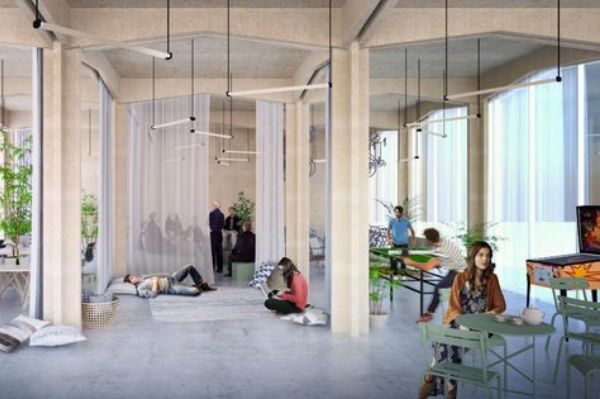Looking for the balance between remote and face-to-face work
According to different studies and surveys, currently, few people want to return to their offices, so many companies are beginning to adopt flexible and hybrid work strategies to adapt to this new reality. Covid has accelerated remote work and has become the way of working for almost 3 million employees in Spain, taking into account that in 2018, according to the INE, only 4.3% worked remotely, this represents an increase of 74% (which is not enough) and has had a strong impact on the way many people work.
The report A sustainable workplace: towards a remote and face-to-face model, by IESE and Savills Aguirre Newman, gathers the experience of 3,450 workers from 11 countries and concludes that teleworking two or three days a week is the most optimal option for companies and employees.
Flexible work is here to stay; organizations and companies are in the process of reflection, studying and exploring how they can adopt this new model in their organizational structure, manage the company culture, as well as effectively manage their teams; quite a challenge for the vast majority. We can help you through this process that will take place in the long term because companies need preparation and transition time. Still, everything indicates that we are heading towards a hybrid work system, where employees can work from the company or anywhere else.
The Hub & Spoke model
Many organizations are opting for one strategy: the Hub & Spot model, a decentralized core and spoke office real estate solution. This model turns the company headquarters into a place of collaboration and acts as a “hub” in the company culture. It also includes a network of satellite offices, usually coworking spaces, located in residential areas where employees live.
“Our enterprise tenants tell us that they do need a hub-and-spoke model,” WeWork CEO Sandeep Mathrani told CNBC. “Offices need to be closer to where your employees live to minimize travel time.”
The office will not disappear, but it will acquire a different function that will lead companies to reconfigure their workspaces. The office becomes the connection point for employees, the soul of companies, and collaboration where things happen, just like in coworking spaces. Its new function is socialization, and this has clear benefits in terms of motivation, productivity, collaboration, autonomy or well-being of people. In this sense, offices represent an essential asset for productivity.
According to an article in Eje Prime; – The offices of the future will be a “meeting place”, with added value, with flexible spaces conceived as places of creativity, inspiration and communication-
Does it remind you of a coworking space?
Transform your corporate office into an open coworking space
On the other hand, the hybrid office will generate an excess of unused space with expenses that companies will want to make profitable by transforming their properties and obtaining direct income. They will integrate coworking spaces into their buildings and/or hire coworking operators to manage and lease these spaces.
Bayer is an example. Its headquarters in Barcelona has 9,800 m2 with 7 floors; one of the floors is for coworking. ING is another example; it is subletting 3,000 m2 from the flexible space operator Spaces in its Madrid headquarters.
In our article Transform your corporate office into an open internal coworking space, we describe the four steps to adopt coworking, from least to greatest impact and results. Apart from being a good real estate solution for organizations, this model undoubtedly has a strong impact on the organization in terms of innovation because a plural and open environment allows new inputs, adopting new ways of doing and accessing talent through entrepreneurship.
It is time to make the switch to the New Culture.
As we explained in How coworking has transformed the world of work, coworking is not just a physical space, it is a way of working.
For those of us who have been in the coworking sector for a long time, it is what many companies must learn to do now and benefit from.
The coworking culture is based on values such as openness, transparency, collaboration, accessibility, community, autonomy, choice, flexibility… that promote corporate innovation; they are values that will define effective hybrid work strategies.
The results for the company are precise; we are talking about increasing productivity, efficiency and employee commitment, increasing collaboration of projects, obtaining a natural source of innovation, reducing absenteeism, attracting and retaining talent, among others.
At HWL, we work with companies that need to transform their work model and way of working. We help them integrate a suitable hybrid strategy for their company through the culture of coworking.
Our approach is designed to tailor the right hybrid strategy in the workplace, improving the use of your real estate assets while improving your employee engagement.
If your organization needs help to make the transition to the New Work Culture. Get in touch.
This article has written by Vanessa Sans, coworking, coliving and workspace consultant.
